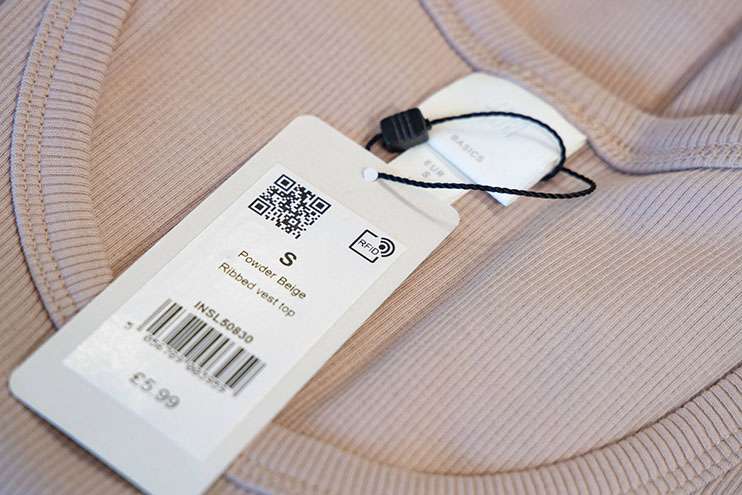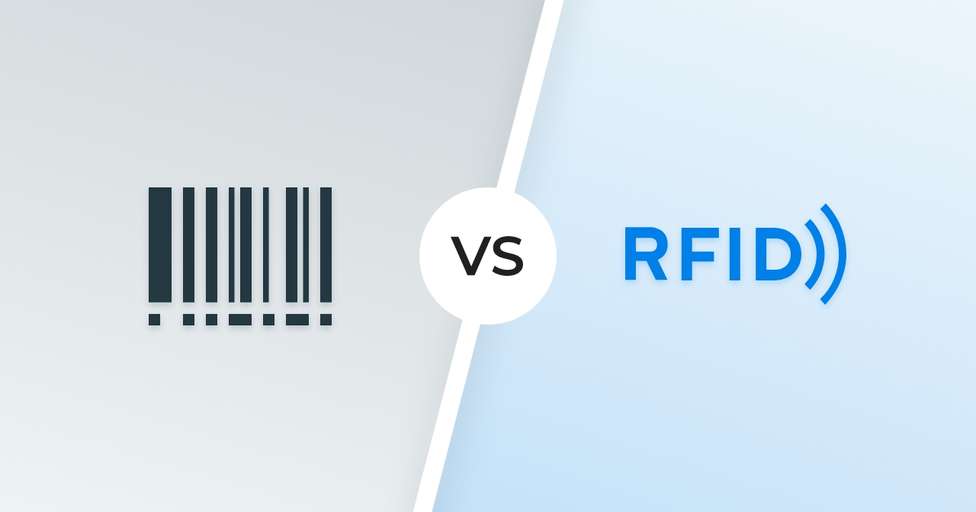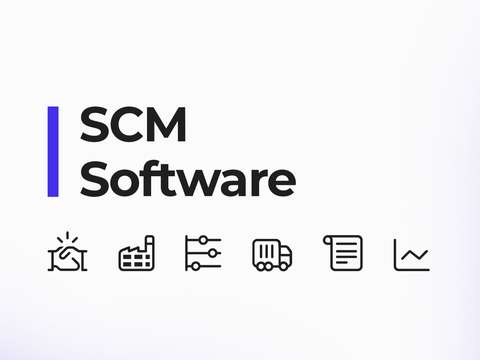RFID tags and barcodes are some of the most popular technologies used to identify and track the movement of products in the inventory until they’re sold or delivered to their final destination.
Typically, you can find these identification systems being used in the retail industry or for the transportation of goods.
Because companies aim to decrease costs as much as possible, some dedicate some time to decide which is better: RFID (radio-frequency identification) or barcodes.
The system they choose will have a significant impact on the productivity and efficiency of the business, so rushing the decision merely because of costs isn’t the best move.
RFID vs. barcodes: What’s the difference?
RFID chips have some disadvantages that barcodes don’t, and the same goes for their advantages.
The main differences between these two identification systems can be reduced to:
- The speed at which they can be produced
- The cost for each identification unit
- Their popularity in the market and their compatibility with other tools

Source: SML
However, for you to make an informed decision, these factors may not be enough. Keep reading to discover all of the advantages and disadvantages of RFID tags and barcodes.
Cost of an RFID tag
One of the most important — and costly — disadvantages of RFID tags is that they can be up to 10 times more expensive than barcodes.
The price of an RFID reader is also considerably higher than that of a barcode reader or scanner, adding to the relatively high cost of this option.
Other disadvantages of RFID
- RFID tags can be unreliable when in contact with metal or liquids.
- RFID tags can be read accidentally because of their wide reading range.
- The implementation of RFID is more time-consuming than the generation of barcodes.
- Although it’s not relevant for every business, RFID are less environmentally friendly than barcodes because of the materials and resources needed for their implementation.
RFID benefits
Despite the disadvantages, RFID technology, if financially viable, is often used because it brings many benefits to the operations of the company:
- RFID tags can identify dozens or hundreds of items at once (from as far as 100m).
- RFID tags identify each unit of product, instead of identifying only a product type as a barcode would.
- RFID tags have read and write abilities (vs. barcodes, which can only be read). This means you can update data in real time.
- RFID tags are more resistant to sun and rain than barcodes (but they can be damaged by liquids and metal).
- Data on RFID technology can be encrypted for greater security.
- One of the best reasons to use RFID tags is the fact that they can be printed with a barcode, so you don’t need to miss the benefits of barcode scanning too!
- RFID can only be used internally, with professional tools. This means that barcodes need to be used too, in order to make operations at physical stores viable and more profitable.
What is barcoding?
Barcoding can refer to the practices of scanning barcodes, generating barcodes and, in some cases, using barcodes.
Barcodes can be attached to the products or to their primary packaging in order to be scanned as needed and used to optimize eCommerce operations such as the picking and packing or the return or exchange of a product in the warehouse.
How does a barcode work?
Barcode readers can be attached to a computer or another system — like a self-checkout — or they can be portable and handheld, like the barcode scanners used in a warehouse to identify, track and scan inventory.
For instance, with Outvio you can scan the barcode of the product you’re about to ship to verify that it definitely goes in that order as you pack it. This is one of the many features available for Outvio clients who are invested in the efficiency of their operations.
Barcodes can be part of a UPC (Universal Product Code), EAN number (European Article Number) or an IAN number (International Article Number). All of these systems are standardized and widely used. Most probably, if you encounter barcodes, they belong to one of these systems, meaning they can be used both internally and outside of a company’s facilities.
This is another advantage of barcode systems; they provide certain information to consumers who won’t need a specialized tool to understand it. For example, customers can see the country where the product was manufactured. This is something that isn’t possible with SKUs or RFID tags.
Main advantages of barcodes
These are some of the main advantages of using barcodes for tracking, identifying and verifying items:
- Accuracy of information.
- Easy and affordable implementation.
- Extended technology that’s compatible with hundreds of devices.
- No possibility of human error (the main reason for using identification systems).
- Environmentally friendly (because they’re represented with ink, instead of plastic and metal like RFID tags).
Disadvantages of barcoding
Barcodes also have some disadvantages compared to RFID chips:
- Reading barcodes is slower than reading RFID chips.
- They aren’t durable, as they can be easily damaged by exposure to water or sun.
- They store less information than RFID chips and are only readable (not editable).
- The information stored in each barcode can’t be encrypted.
- Barcodes can’t uniquely identify every unit of a product.
Conclusion
There’s no right or wrong system to use to identify your products. Once the benefits and disadvantages of both systems are clear, it’s up to each business to decide what makes more sense for them financially and strategically.
That said, barcodes are widely used, which means that you can find affordable and effective barcode scanners and platforms that use the technology to improve processes, as Outvio does.
Simply scan the barcode and never ship the wrong product again!




